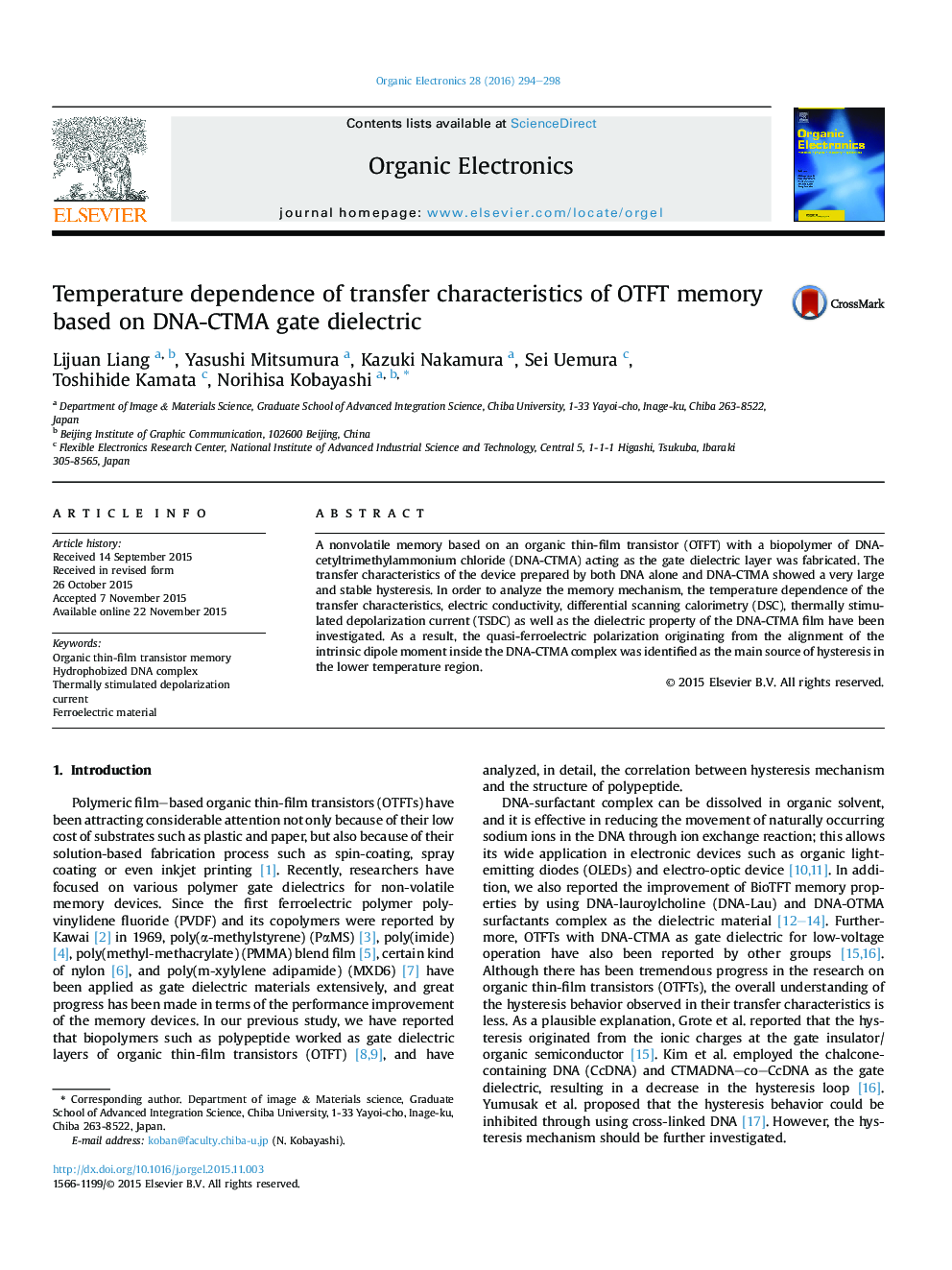| Article ID | Journal | Published Year | Pages | File Type |
|---|---|---|---|---|
| 1267148 | Organic Electronics | 2016 | 5 Pages |
•A nonvolatile memory based on an organic thin-film transistor with hydrophobized DNA.•Large and stable hysteresis on transfer characteristics of the device.•These characteristics were analyzed thermally stimulated depolarization current.•Quasi-ferroelectric polarization of the DNA film induced hysteresis behavior.
A nonvolatile memory based on an organic thin-film transistor (OTFT) with a biopolymer of DNA-cetyltrimethylammonium chloride (DNA-CTMA) acting as the gate dielectric layer was fabricated. The transfer characteristics of the device prepared by both DNA alone and DNA-CTMA showed a very large and stable hysteresis. In order to analyze the memory mechanism, the temperature dependence of the transfer characteristics, electric conductivity, differential scanning calorimetry (DSC), thermally stimulated depolarization current (TSDC) as well as the dielectric property of the DNA-CTMA film have been investigated. As a result, the quasi-ferroelectric polarization originating from the alignment of the intrinsic dipole moment inside the DNA-CTMA complex was identified as the main source of hysteresis in the lower temperature region.
Graphical abstractFigure optionsDownload full-size imageDownload as PowerPoint slide
